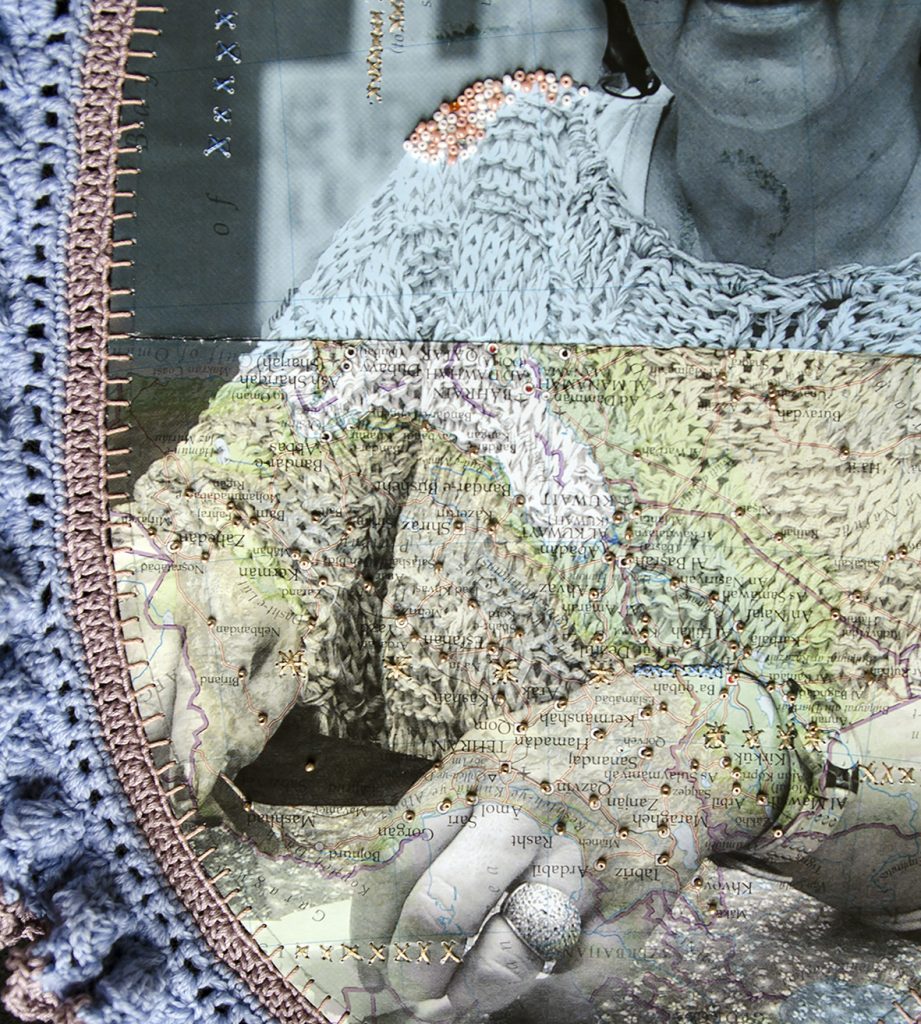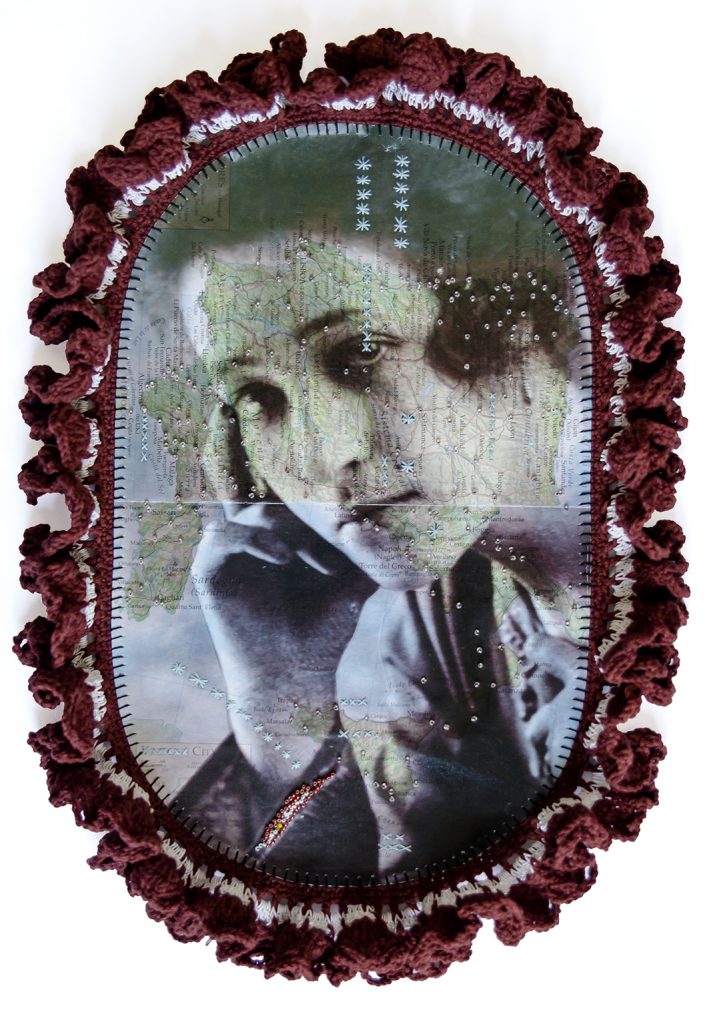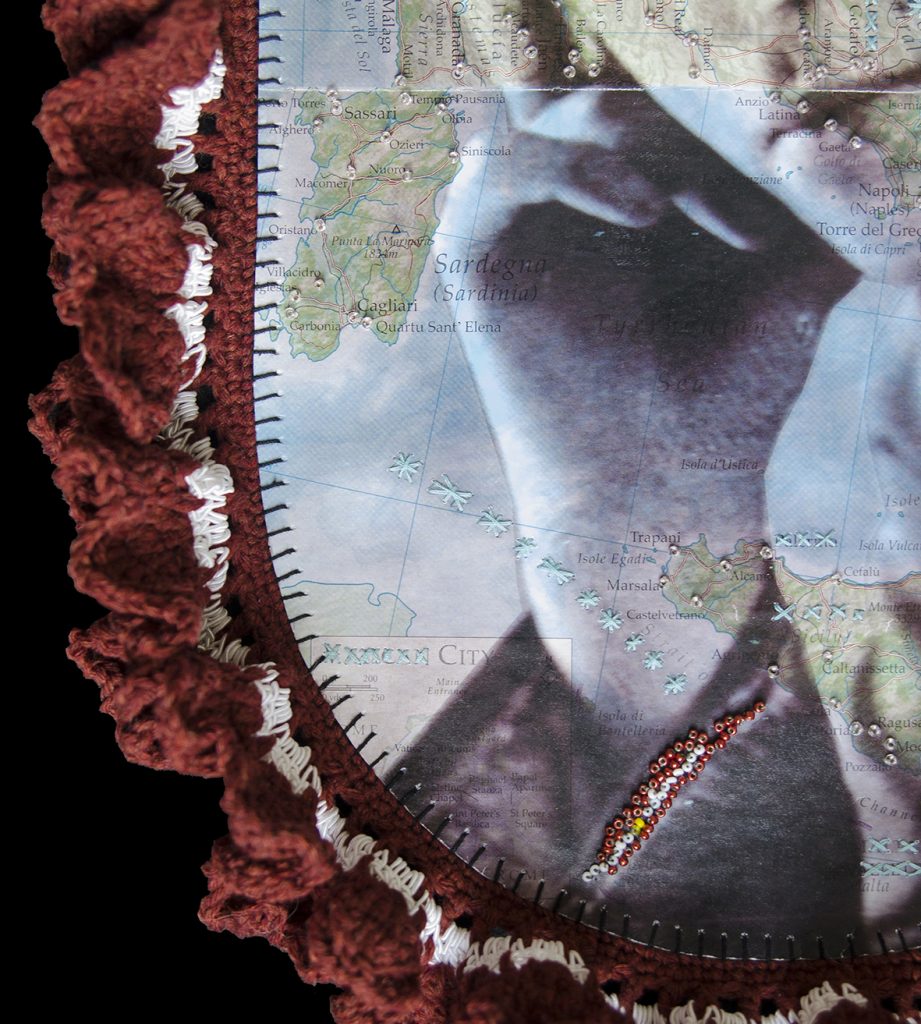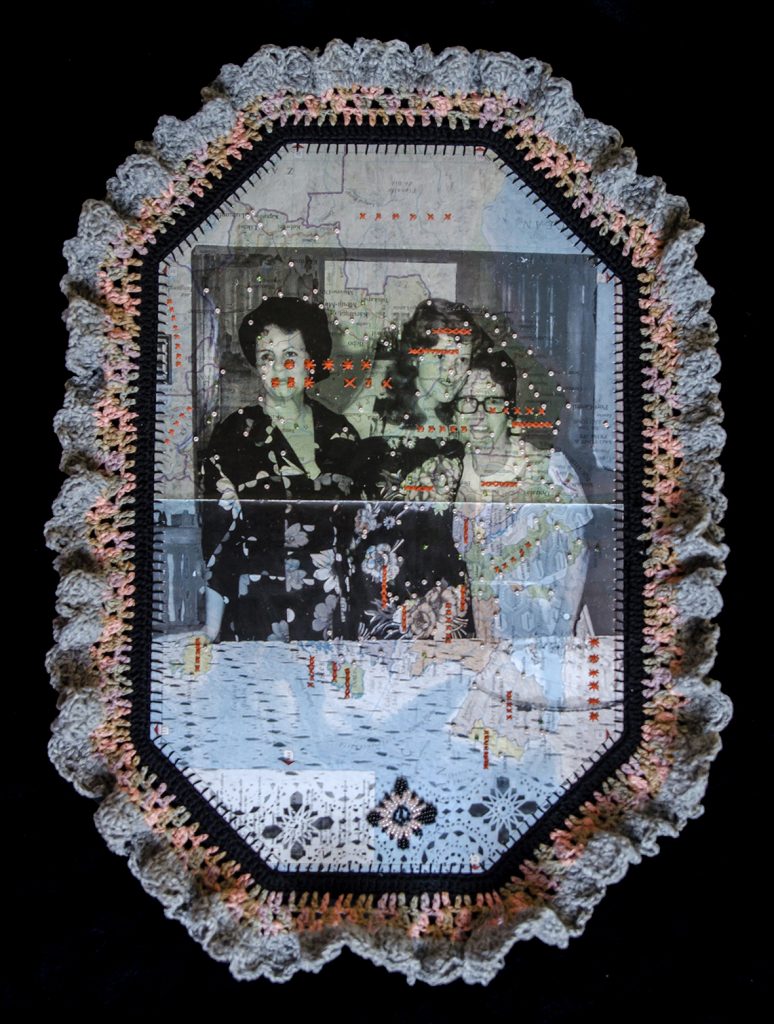Textile Woman: New Historiographical Atlas
Natalia de la rosa, Textile Woman.
18 July, 2022
Unravel, The Daily Revolution.
18 September, 2022
I purchased a sewing box and an embroidered blanket three years ago from a thrift shop. I discovered a collection of textile materials inside the sewing box, along with detailed instructions for creating a beaded craft. The blanket came with a handwritten note that read:
“Alexa,
This is a linen huck towel. The Basket of Flowers is petit point. I will show you how to do it too. The hem is hand-hemstitched, and it is fun to do, too.
Love, G’ma Pauline.”
Though I had never met these women—Alexa or G’ma Pauline—I felt a deep connection to them through these objects. I interpreted the note and materials as a kind of inheritance, passed down not by blood, but by shared craft and care. Inspired by this discovery, I chose to honor their message and follow the instructions as if they were left for me.


This is an ongoing project. I have been asking people to send me a photograph of a woman who has influenced their life and a comment telling me why.
Some details
- Marisol Garcia Walls, from Mexico, sent me a photo and an explanation:
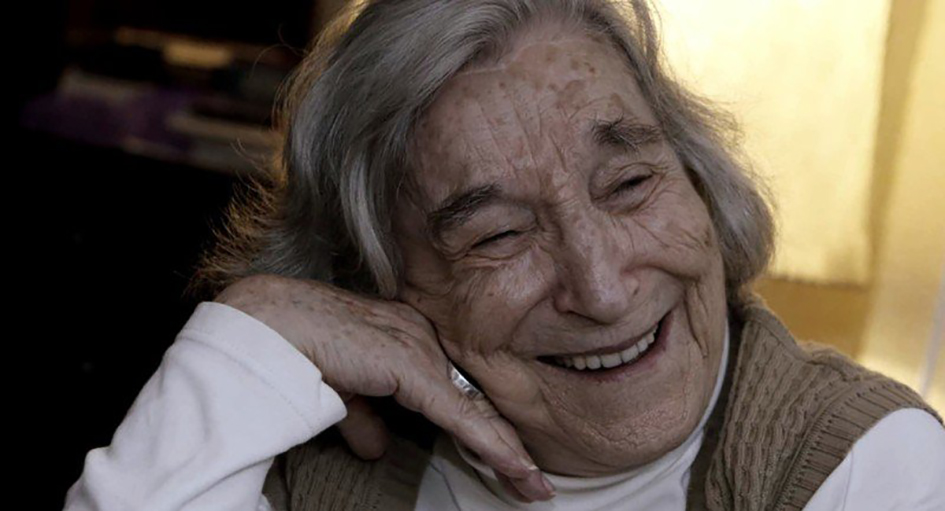
Marisol’s Comment
The woman in the photograph is Margit Frenk, whom I had the privilege of assisting in research when I was 24 and she was 87. At that time, she was nearly blind, but that didn’t stop her. She continued to “read” with the help of her assistants, and she never stopped publishing books, papers, and articles for Conacyt!
I spent three beautiful years working alongside her. We read novels, medieval songbooks, and popular lyrical poems together, often accompanied by the sound of little birds in her garden.
Later, my work with Margit shifted toward a more personal realm. She became involved in a lawsuit in a New York court, seeking the return of artworks stolen from her stepfather during World War II. This required her to delve into her mother’s archive, Mariana’s archive. We spent a summer immersed in those documents, translating them into French, English, or German and slowly piecing together the history of the stolen paintings.
Eventually, we traveled to New York together, where we took a photograph—though sadly, I haven’t been able to find it. Instead, I’m attaching a photo I found online, where Margit smiles.
New Historiographical Atlas
This is the portrait I created, and it is now part of the Historiographical Atlas. I printed the photograph onto one of the atlas pages and used materials from the sewing box to make textile interventions directly on the image. I also crafted the frame in crochet, bringing together past and present through thread and memory.
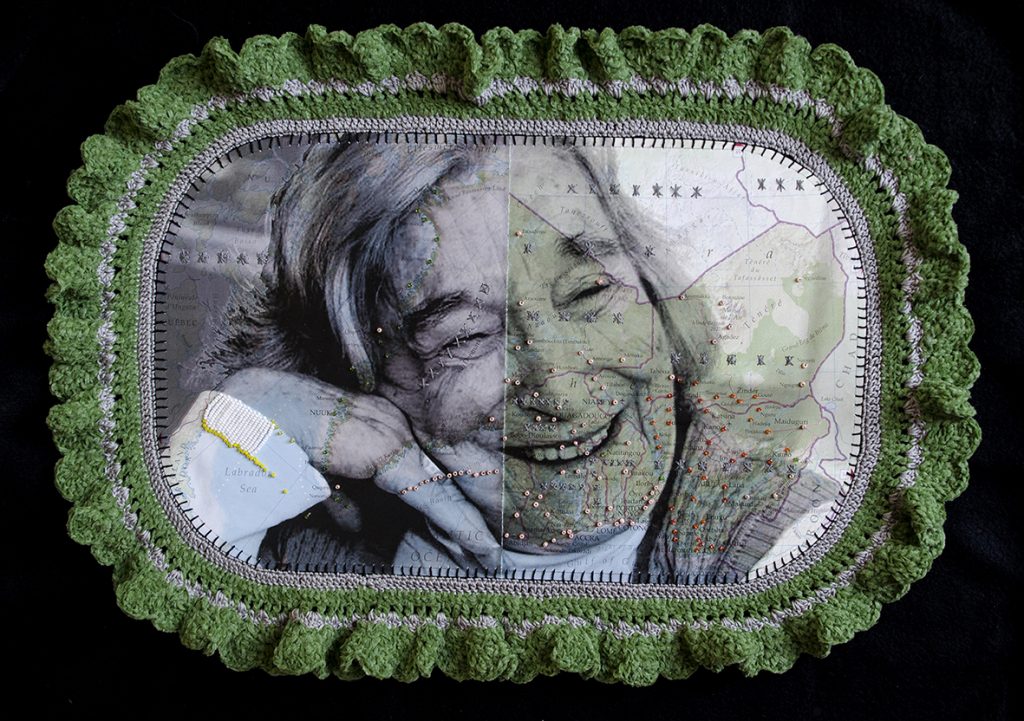
2. Dulce María Nunes Oseguera from México sent me a Photo and an explanation:
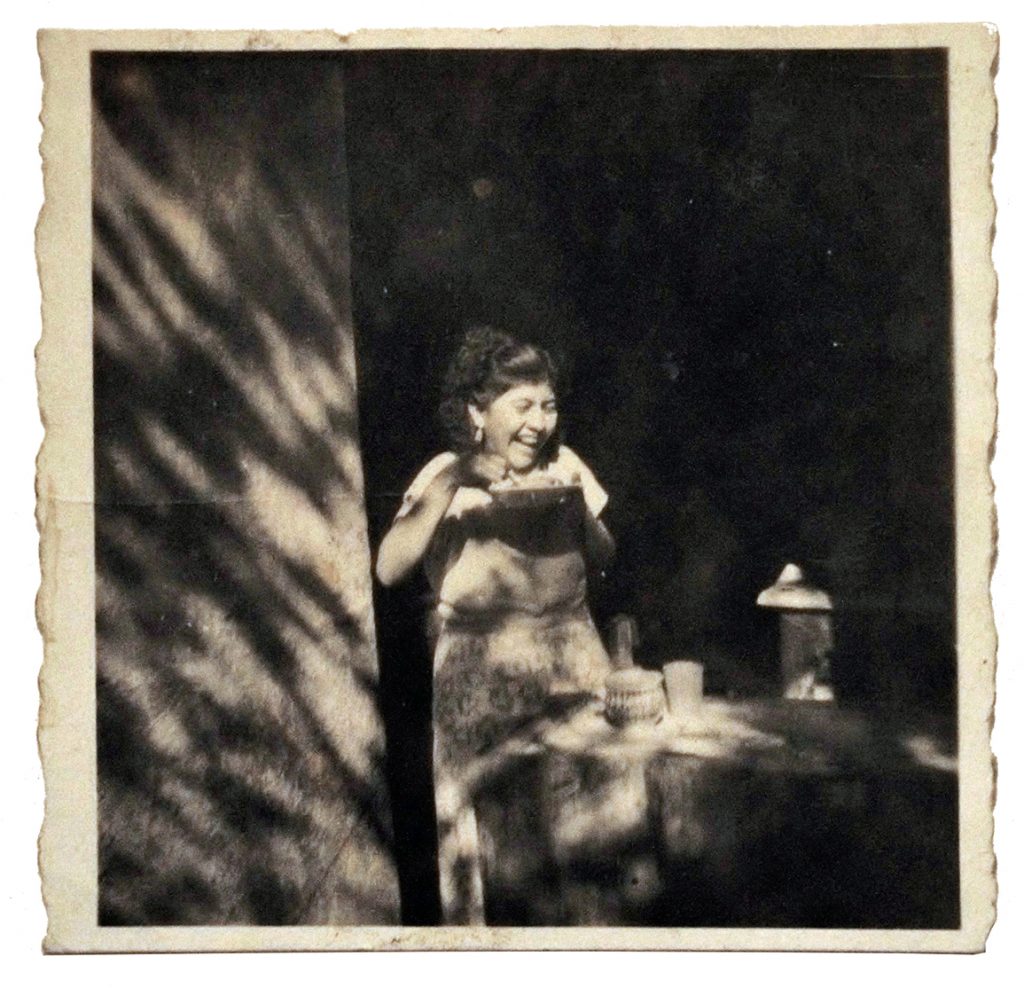
Dear Yohanna,
I’m sending you a photo of my maternal grandmother, a woman I deeply admire for her strength and resilience. She battled cancer while pregnant and remained a warrior until the very end. She married my grandfather, Roberto, whom she met on an island where she lived in Campeche. My grandfather had a tough beginning—he spent his entire childhood on the streets before becoming a sailor. Despite their different backgrounds, they stayed together until the end of their lives. I’m also sending you a poem written by my grandfather. The notebook it was in got wet while he was on the boat, which is why it looks the way it does now. There were always whispers and rumors about their relationship—people were curious to see my grandfather, a white-skinned man with blue eyes, married to a Mayan woman with Indigenous features. But in our family, we believe what truly drew him to her went far beyond physical beauty. Her extraordinary courage, bravery, and the fierce strength with which she lived her life.
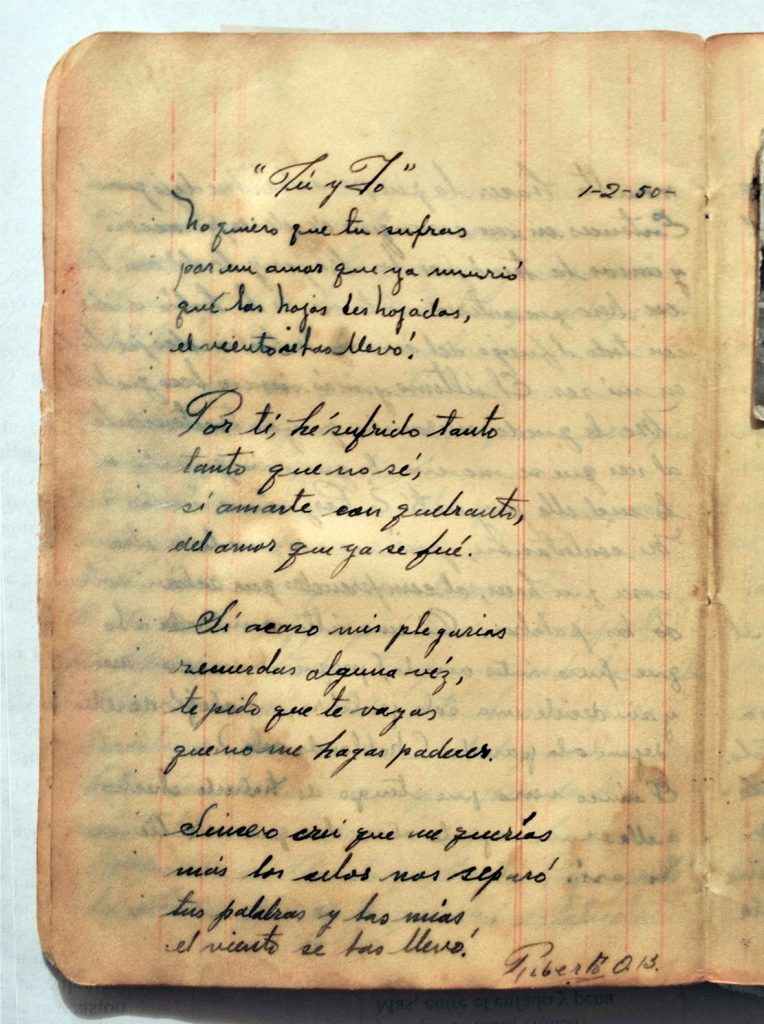
New Historiographical Atlas
This is the portrait I created, now part of the Historiographical Atlas. I printed the photograph onto a page from the atlas and used materials from the sewing box I found to make textile interventions on the image. The frame was made in crochet, combining archival memory with inherited craft, and stitching personal history into a broader historical narrative.
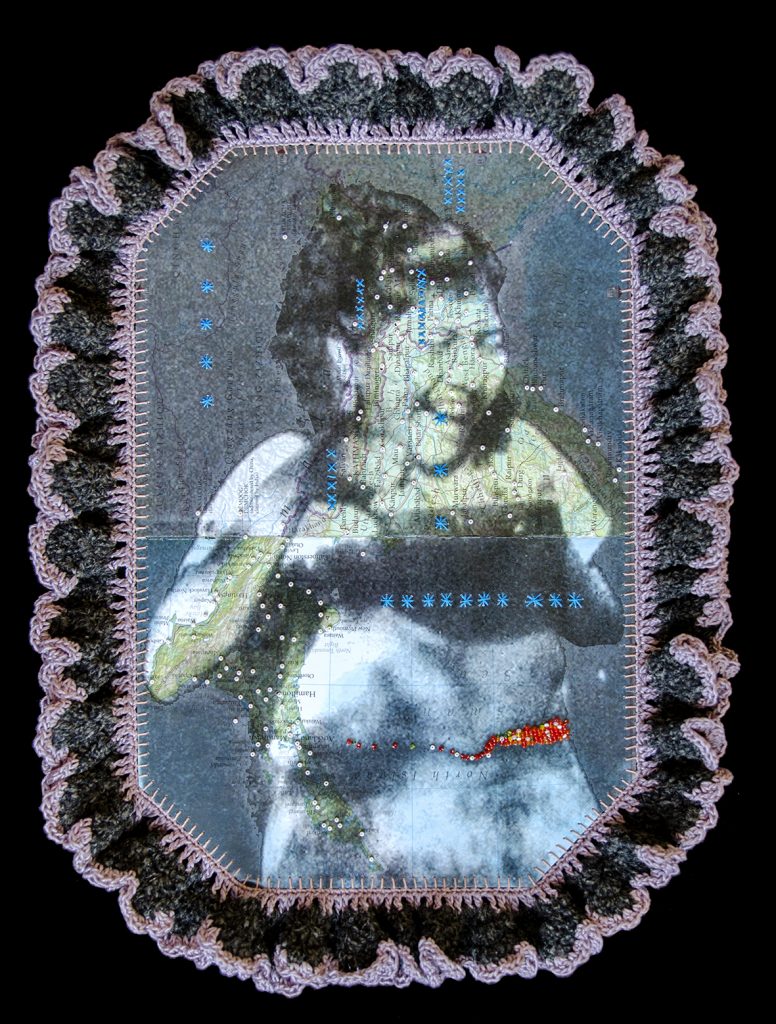
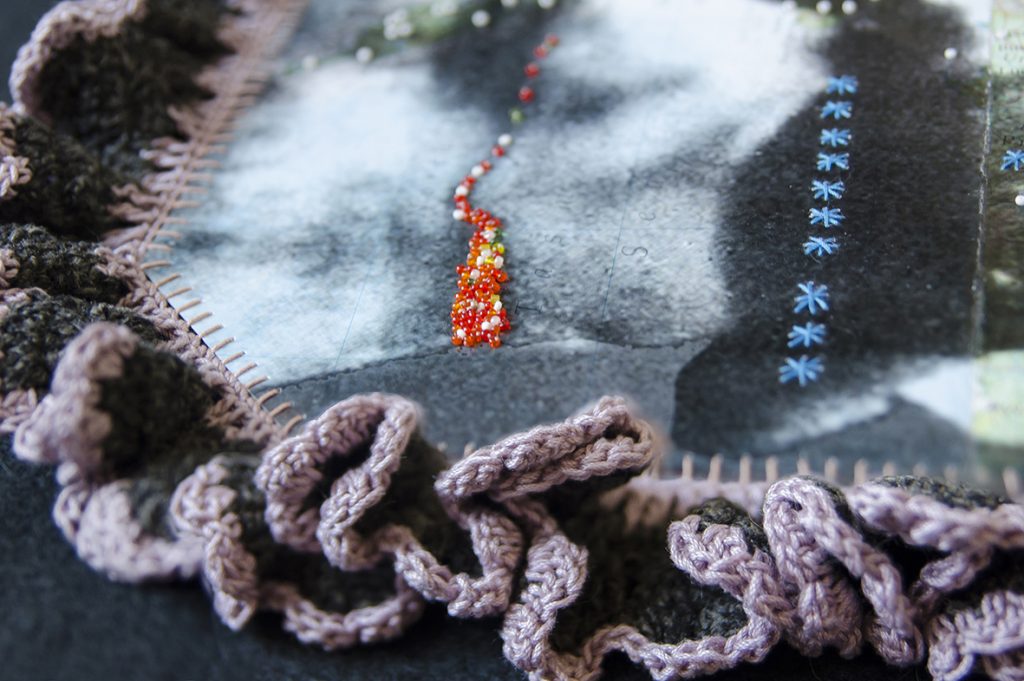
I am creating a textile cartography with their portraits and stories.
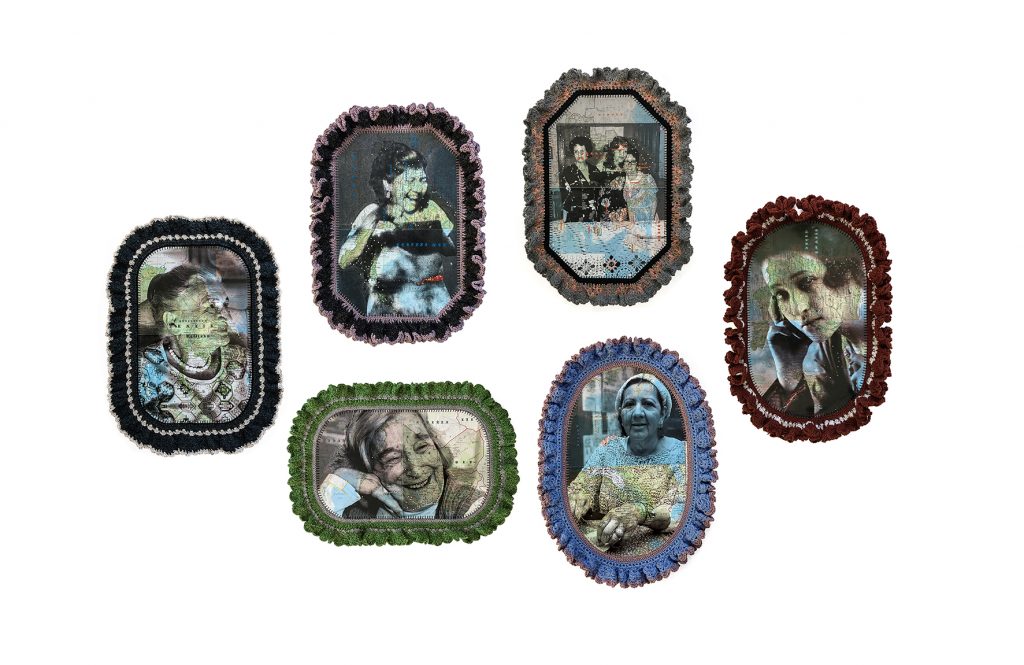
More details

